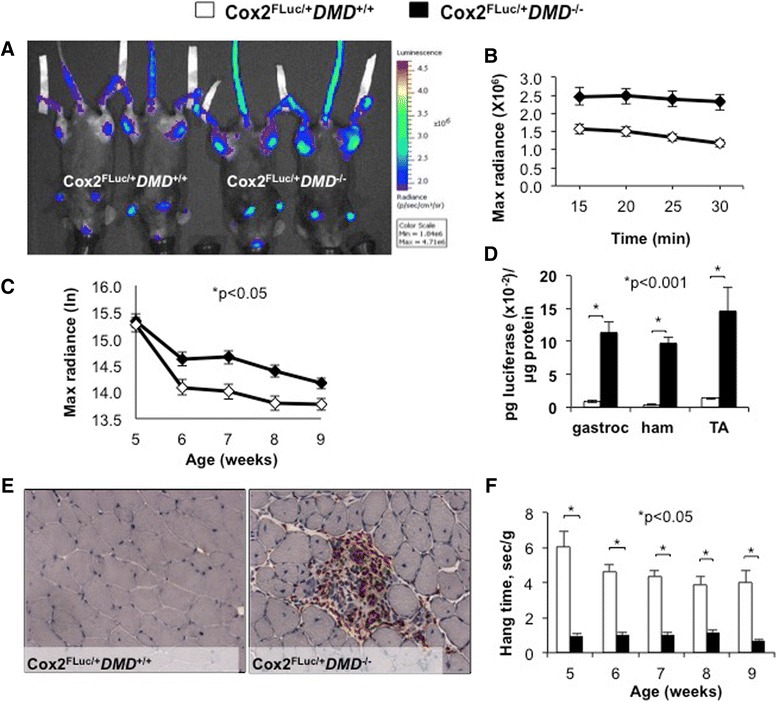Figure 2.

Optical imaging detects muscle damage in exercised Cox2 FLuc1/+ DMD −/− mice. (A) Representative bioluminescent image taken 25 min after D-luciferin injection into 6-week-old female exercised Cox2 FLuc/+ DMD −/− mice and non-exercised Cox2 FLuc/+ DMD +/+ mice. (B) Representative example of data obtained from a group of mice imaged at 6 weeks of age, demonstrating the stability of the bioluminescent signal over the imaging period. (Cox2 FLuc/+ DMD +/+ N = 14, Cox2 FLuc/+ DMD −/− N = 17) (C) The optical imaging data are graphed as log base e (Cox2 FLuc/+ DMD +/+ N = 15, 14, 14, 15, 24, and Cox2 FLuc/+ DMD −/− N = 18, 17, 19, 20, 35) at 5, 6, 7, 8, and 9 weeks of age. (D) Ex vivo luciferase enzymatic assays of gastrocnemius, hamstring, and tibialis anterior muscles harvested from Cox2 FLuc/+DMD−/− (N = 6) mice and Cox2 FLuc/+DMD+/+ (N = 3) mice. Mice were 6 to 9 weeks of age. (E) Representative cross sections of 8 week old Cox2 FLuc /+ DMD +/+(left) and Cox2 FLuc/+DMD−/− (right) muscles, stained with a macrophage marker CD68 (red) and counterstained with hematoxylin (blue). (F) Muscle strength testing in Cox2 FLuc /+ DMD −/− mice (N = 9, 15, 11, 11, and 11) and Cox2 FLuc/+DMD+/+ mice (N = 7, 6, 6, 6, and 5) at 5, 6, 7, 8, and 9 weeks of age.
